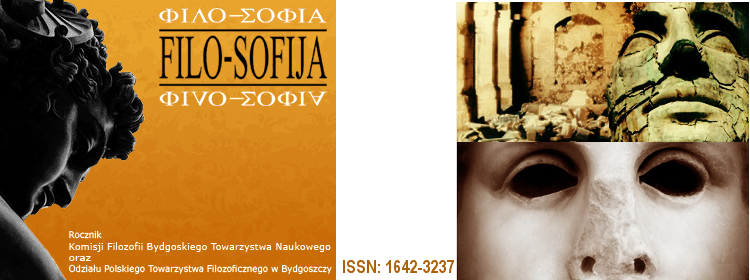Nowa indukcja a nowy realizm
Abstract
New Induction and New Realism
P. Kyle Stanford formulated his New Induction over the History of Science in order to show that underdetermination of scientific theories by evidence is a genuine problem of scientific theorizing about the world and a one that all scientific realists should take seriously. His argument uses historical record to show that because successful theories of the past were typically, in the light of the then available evidence, underdetermined by theories which we could not at the time conceive, we should expect that our best contemporary theories are also undetermined by some yet unconceived alternatives. The aim of this article is to show that the threat of New Induction is ultimately no different than the threat of classical Pessimistic Induction in the way that to give a successful response to the later on behalf of scientific realism is, at the same time, to give a successful response to the former. I point out to some recent realistic responses to Pessimistic Induction to show that there are now viable realist positions, which allow one to embrace Pessimistic Induction as to whole theories and still remain realistic about certain parts of our theoretical knowledge of the unobservable. I argue that since historical record gives us inductive rationale for expecting that certain parts of our best theories will be preserved in future theories, we can also rationally expect that those parts are not underdetermined by yet unconceived future alternatives, and hence New Induction poses no threat to some new forms of scientific realism.
Keywords: scientific realism, semirealism, antirealism, underdetermination, pessimistic induction, new induction.
P. Kyle Stanford formulated his New Induction over the History of Science in order to show that underdetermination of scientific theories by evidence is a genuine problem of scientific theorizing about the world and a one that all scientific realists should take seriously. His argument uses historical record to show that because successful theories of the past were typically, in the light of the then available evidence, underdetermined by theories which we could not at the time conceive, we should expect that our best contemporary theories are also undetermined by some yet unconceived alternatives. The aim of this article is to show that the threat of New Induction is ultimately no different than the threat of classical Pessimistic Induction in the way that to give a successful response to the later on behalf of scientific realism is, at the same time, to give a successful response to the former. I point out to some recent realistic responses to Pessimistic Induction to show that there are now viable realist positions, which allow one to embrace Pessimistic Induction as to whole theories and still remain realistic about certain parts of our theoretical knowledge of the unobservable. I argue that since historical record gives us inductive rationale for expecting that certain parts of our best theories will be preserved in future theories, we can also rationally expect that those parts are not underdetermined by yet unconceived future alternatives, and hence New Induction poses no threat to some new forms of scientific realism.
Keywords: scientific realism, semirealism, antirealism, underdetermination, pessimistic induction, new induction.
Pełny tekst:
PDFAdministracja Cytowania | Strony czasopism
